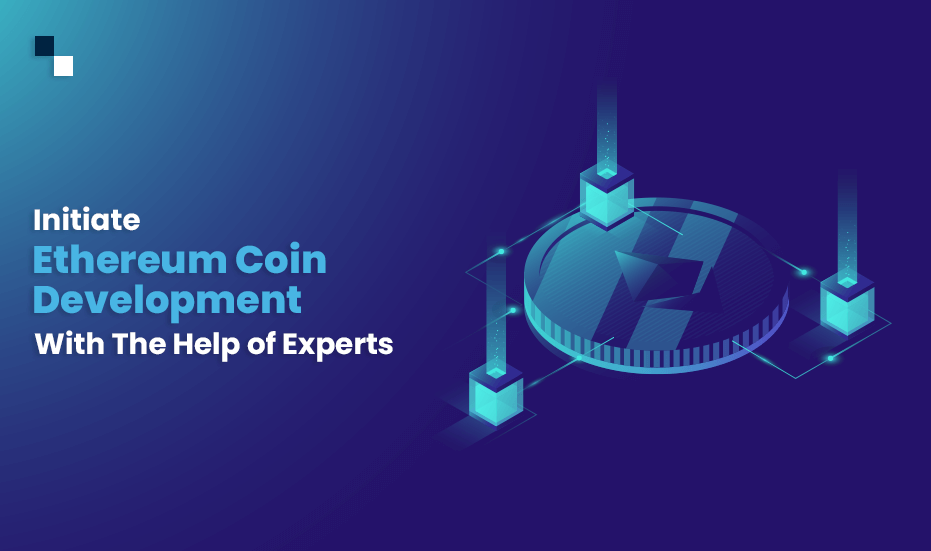Ethereum is a decentralised blockchain-based software platform with smart contract capabilities. Ethereum is an open source platform that is primarily used to support Ether, the world’s second-largest cryptocurrency. Ethereum’s blockchain enables smart contracts and apps built on it to execute seamlessly without fraud, downtime, control, or third-party interference. In 2016, Ethereum was divided into two blockchains: Ethereum and Ethereum Classic. This was because of a theft earlier that year that the hacker stole $50 million in Ether. The hacker took use of a weakness in a third-party project to exploit a DOA. As of September 2019, Ethereum was the market’s second-largest digital currency. Ethereum’s vision is to revolutionize the way applications are used on the internet today.
Ethereum coin Development aids developers in the development of distributed apps. One of the biggest Ethereum projects is Microsoft’s collaboration with ConsenSys, which offers Ethereum Blockchain as a Service on Microsoft Azure allowing enterprise clients to have a cloud-based blockchain environment with a single click.
A Quick Eye on Ethereum Coin Development Process
A coin Development company process entails envisioning the project, building the architecture and user interface, creating and testing the smart contract, deploying the programme on the Ethereum network, and supporting it to ensure its long-term success. Ethereum’s consensus protocol named ‘Casper’ was an important movement towards achieving scalability. The goal of this proposal is to transition Ethereum from a Proof-of-Work to a Proof-of-Stake architecture. The Ethereum development process involves several steps, from conceptualization to deployment.
1. Conceptualization
The first stage is to outline the aims and objectives of the project. This entails identifying the problem that the project is attempting to address and assessing whether Ethereum is the best platform on which to build.
2. Design
Once the project ’s objectives have been identified, the following phase is to design the application’s architecture and user interface. This includes determining the essential features and functionalities, as well as creating wireframes and user journeys.
3. Development
The smart contract is at the heart of any Ethereum application. Smart contracts are pieces of code that run autonomously on the Ethereum network. They establish the application’s rules and logic, such as how transactions are performed, data is saved, and users engage with the application.
4. Testing
Once the smart contract has already been created, it must be rigorously tested to ensure that it performs as planned and is secure. This includes both automated and manual testing of the smart contract on a network system.
5. Deployment:
The smart contract can be deployed to the Ethereum network after it has been verified and audited. The smart contract code is deployed by uploading it to the Ethereum network and interfacing with it via a wallet or dApp browser.
6. Maintenance
Once an application has gone live, it must be maintained to guarantee that it keeps working properly. This includes checking the smart contract for bugs or security flaws and providing updates as needed.
The PoW technique of mining and network support necessitates a large amount of computer power, which is the root cause of the scaling issues. All blockchains that use some type of Proof-of-Work paradigm will end up running into scalability challenges once the network reaches a certain utilization level. However, switching to Proof-of-Stake (PoS) Ethereum coin Development may reduce some of the scalability concerns. PoS is an alternate method of processing blockchain transactions, allowing miners to collect block incentives based on the number of coins they own. As a result, the larger a node’s coin stake, the better its chances of mining the transaction and receiving a larger payout.
Ethereum Use Cases for Protecting Sensitive Data Better
Permissioned blockchain networks are private networks that only trusted parties can join. Companies that use permissioned blockchain networks have user and identity management systems in place. Users certified by such an identity management system will be allowed on a permissioned blockchain. Coin Development Company secure sensitive data by implementing access control.
Decentralized Finance (DeFi): Decentralized finance refers to financial services and products that are available and accessible to anybody who has access to Ethereum. With DeFi, no authority can refuse a user access to anything or prevent payments, and marketplaces are always open. The codes may be inspected by anyone, and there are no longer any concerns of human error because the services are now automated and governed by code. Some of the issues that present in traditional finance include:
- Individuals are barred from using financial services.
- Individuals may be unable to receive payment if they use financial services.
- Trading hours are restricted to specific time zones.
- Markets can be shut down at any time by centralized organizations and governments.
The user holds and has absolute control of their own money in the DeFi system and the transfer of funds takes only a few minutes as the market is constantly open. A user can also send money anywhere in the globe, gain access to stable currencies, obtain money with or without collateral, exchange tokens, purchase insurance, and do a variety of other things with Ethereum coin Development.
Non-Fungible Tokens (NFTs): NFTs are currencies that can be connected to one-of-a-kind products and are not interchangeable with other items. They enable the valuation of art, music, and other forms of media in terms of digital currency. They are protected by the Ethereum network and can only have one owner at any given moment. A new NFT cannot be created by copying and pasting, and no two may be identical. NFTs can be transferred anywhere, and their owners have worldwide market access.
Decentralized autonomous organizations: DAOs are cooperatively owned and administered by their participants, and they operate on smart contracts. They are internet-based and feature built-in treasuries which can’t access unless the organization grants permission. They make choices through suggestions and voting to guarantee that everyone in the community has an opportunity to express themselves. There is no CEO or CFO, and the rules governing their spending are incorporated into the DAO code. The codes are transparent, and they run a democratic system. Before any modification can be enacted, the votes must be tabulated automatically. DAOs include charitable organizations, ventures, freelancer networks, and so on.
Final Verdict
Blockchain technology is fresh and undergoing rapid evolution in terms of its use. In a nutshell, you need to research essential concepts of Ethereum Coin Development before proceeding ahead. It’s vital to realize that creating blockchain software for a business or organization that addresses a real-world problem is difficult.
Hire the right Ethereum Coin Development Company and team to manage your needs. If you are in need of skilled Ethereum developers, Antier provides the necessary expertise and experience. Our engineers have created a number of blockchain solutions that stand out from the crowd.







